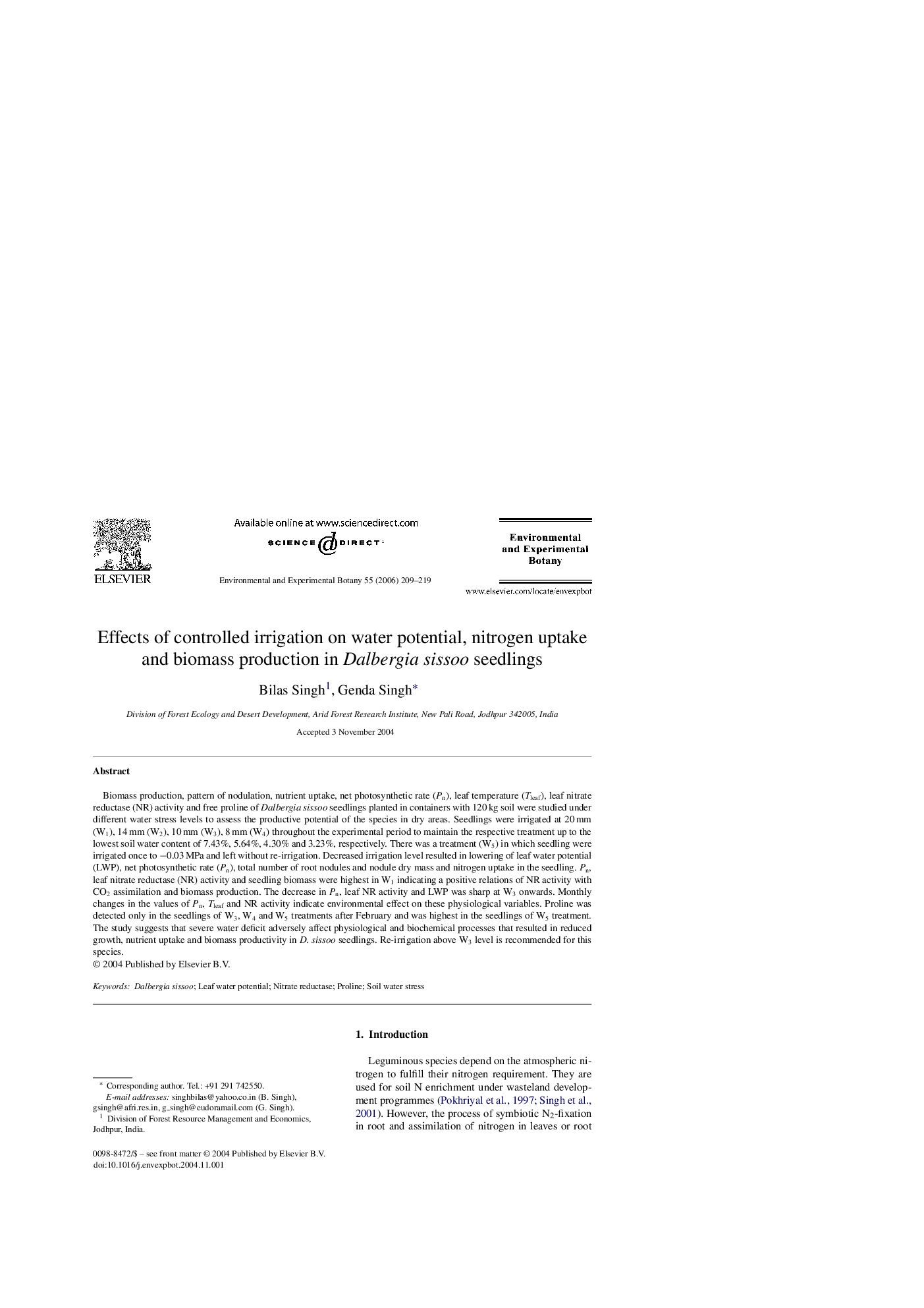| کد مقاله | کد نشریه | سال انتشار | مقاله انگلیسی | نسخه تمام متن |
|---|---|---|---|---|
| 4555750 | 1628111 | 2006 | 11 صفحه PDF | دانلود رایگان |

Biomass production, pattern of nodulation, nutrient uptake, net photosynthetic rate (Pn), leaf temperature (Tleaf), leaf nitrate reductase (NR) activity and free proline of Dalbergia sissoo seedlings planted in containers with 120 kg soil were studied under different water stress levels to assess the productive potential of the species in dry areas. Seedlings were irrigated at 20 mm (W1), 14 mm (W2), 10 mm (W3), 8 mm (W4) throughout the experimental period to maintain the respective treatment up to the lowest soil water content of 7.43%, 5.64%, 4.30% and 3.23%, respectively. There was a treatment (W5) in which seedling were irrigated once to −0.03 MPa and left without re-irrigation. Decreased irrigation level resulted in lowering of leaf water potential (LWP), net photosynthetic rate (Pn), total number of root nodules and nodule dry mass and nitrogen uptake in the seedling. Pn, leaf nitrate reductase (NR) activity and seedling biomass were highest in W1 indicating a positive relations of NR activity with CO2 assimilation and biomass production. The decrease in Pn, leaf NR activity and LWP was sharp at W3 onwards. Monthly changes in the values of Pn, Tleaf and NR activity indicate environmental effect on these physiological variables. Proline was detected only in the seedlings of W3, W4 and W5 treatments after February and was highest in the seedlings of W5 treatment. The study suggests that severe water deficit adversely affect physiological and biochemical processes that resulted in reduced growth, nutrient uptake and biomass productivity in D. sissoo seedlings. Re-irrigation above W3 level is recommended for this species.
Journal: Environmental and Experimental Botany - Volume 55, Issues 1–2, January 2006, Pages 209–219